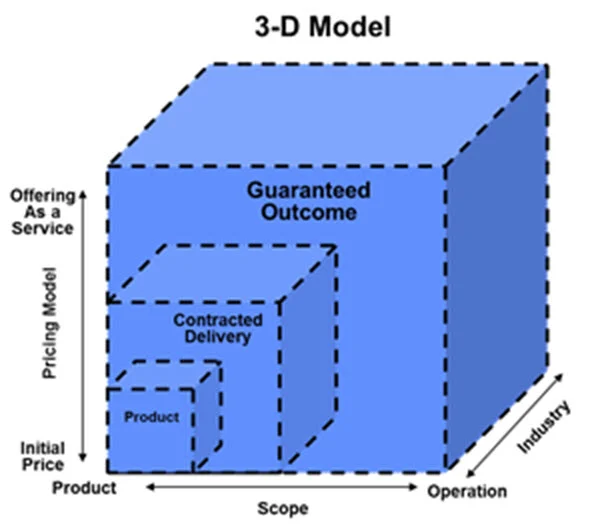If you’re trying to find new opportunities in a market, it doesn’t necessarily mean you have to expand your product line. First, expand your perspective.
Why do I say this? To paraphrase Harvard marketing professor Theodore Levitt, people don’t want to buy a quarter-inch drill bit. They want a quarter-inch hole. In other words, look at the market from the perspective of the problem that you solve.
Look Beyond Drill Bits
If you’re looking for opportunities for growth, don’t limit your thinking by looking just for people who want drill bits. Look for people who need to find ways to make holes. A potential buyer might find any number of options: hammer and nail, a neighbor’s drill, a contractor, a laser cutter, a CNC machine, even dynamite (if he doesn’t care about the precision of the hole). If you limit your understanding of your market to a product definition, you miss out on many alternatives to solving the customer’s problem.
Invariably, however, markets continue to be organized by the product or service being sold. Again, that’s because many sellers and marketers accept the premise that a market is specific to a good or service. If you define your market this way, you’ll frequently miss all kinds of potential customers, including those who:
- Aren’t aware that a solution exists, or didn’t even realize that they have a problem.
- Don’t have access to buy the solution because there isn’t a developed channel to serve them.
- Are currently unable to use the solution because they are missing other elements required to solve the problem.
- Currently won’t buy because the solution lacks benefits for their situation.
- Currently won’t buy because the solution is too expensive for their situation.
Look from Different Perspectives
It’s not always easy to find new opportunities for market growth, but it helps if you look for potential from both a smaller and larger market perspective. The smaller market definition is your core. The larger market definition shows where there is room for growth and where you should be looking to expand.
When looking for new market opportunities, there are many dimensions that you can consider, but these three questions often prove helpful:
1. Who do we serve?
Possibilities include:
- Industries
- Geographies
- End-use applications
2. What are we delivering?
Possibilities include:
- Scope of supply (You can make a sensor going into a pressure measurement device going into a pressure control loop going into a fuel control system, or you could make any of the larger portions of the system.)
- Problems you are solving
3. How are we serving the customer (or getting paid)?
- Payment model (paid an initial price, paid a price plus maintenance, paid as a service, paid as a subscription)
- Basis of payment (paid for delivery of a product, paid for delivery of a capability, paid for an outcome)
Expand Market Definition
The diagram below shows an example of how a product company might be able to expand their market definition.

Think about the market from your potential customers’ perspective, then define the market based on the problem that you’re solving. This will help you think about all of the alternative ways to solve the problem, and it should help you find new opportunities and identify potential competitive threats.

Resources
Connect with Darrin Fleming on LinkedIn.
Join the Value Selling for B2B Marketing and Sales Leaders LinkedIn Group.
Visit the ROI Selling Resource Center.














